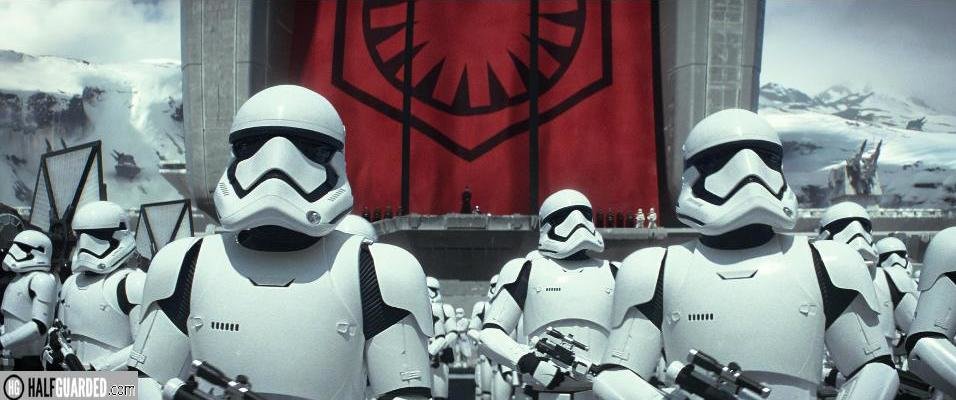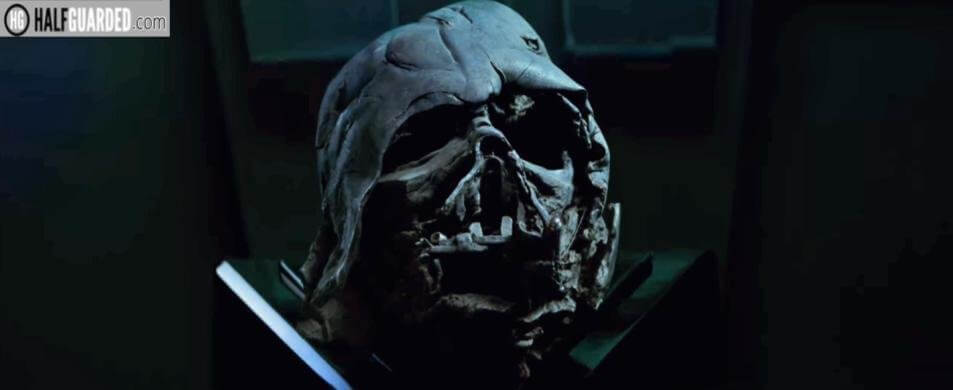(Yeah, who says I can’t come up with a catchy title?)
It was 1968, a time when some newspapers cancelled the popular Peanuts comic strip when it introduced a black character and when NBC were freaking out about an interracial kiss appearing on Star Trek (Kirk had been kissing green women and other alien races for two years but kissing a black woman made them nervous). Still, Stan Lee published this heart felt, simple message.
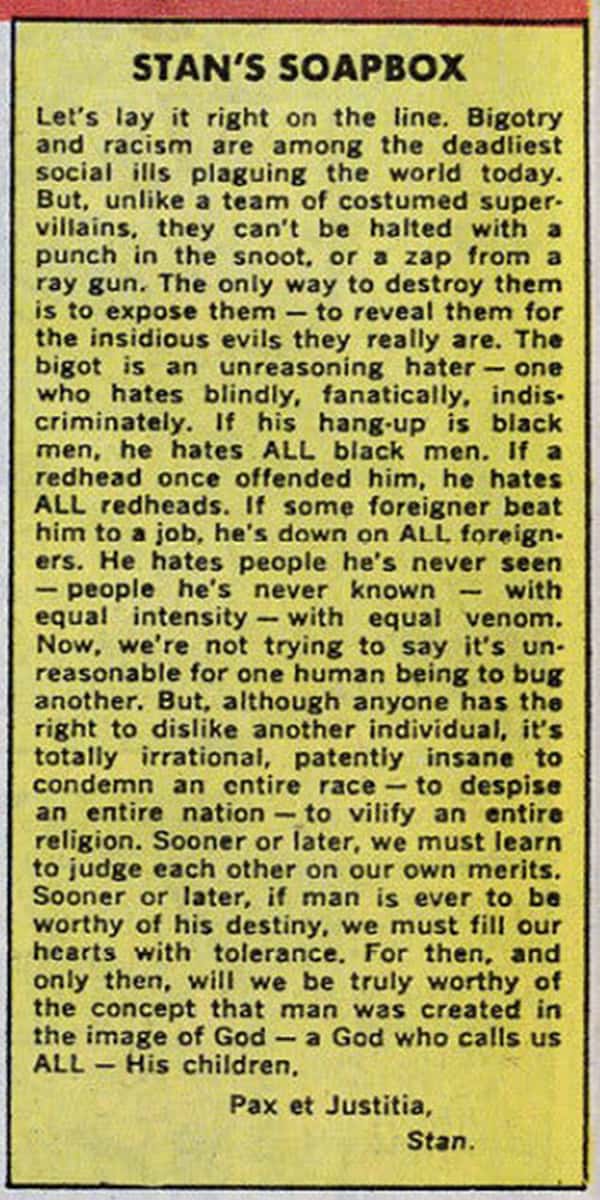
This wasn’t the only time that Stan Lee would use his monthly soap box to comment on social issues. Always in this reasoned, fatherly approach his monologues were moving and quite rational and in a genre based on icons who strived to do good and stand up for those in need seemed perfectly fitting. Yet there were readers who were resistant to what they saw as politicising their escapist fantasies.
Marvel never shied away from this criticism and even printed a respectful response to a letter from a reader who took offense to this scene in a Silver Surfer comic.

The fact is, super hero comics have always delved into political issues of the day and for readers of any era to criticise that is to deny themselves some of the most interesting moments in the history of the genre. The iconic cover of Captain America socking Adolf Hitler (the work of two Jewish creators) hit stands while America was still hesitant to enter the war and some nine months before Pearl Harbour. The X-Men and existence of a mutant race was a transparent analogy for prejudice, with Professor X and Magneto inspired by the doctrines of Martin Luther King and Malcolm X. Steve Rogers would even briefly surrender the role of Captain America in response to a corrupt American government, just a few months after Nixon had resigned in the fallout of Watergate.
Nowadays the controversy surrounding comics with regards politics is like most things today, bad tempered, divisive and aggressively toxic. The easy and instant response and gratification of social media has replaced the days when you had to take the time to write a letter and gather your thoughts, and creators had the breathing space to think and write a thoughtful response. Comic readers (in fact anyone involved in fandom) now can berate creators with entitled whining with the slightest gripe, while in a contrast to the days of Stan’s soapbox those creators worn down with daily abuse will often respond with pretty much a snarky “Fuck off!”
To a lapsed fan (I’m doing fine with my 2000AD these days) the source for these disputes and outrages are bewildering. A photo of a group of Marvel female creators going out for breakfast together prompted a baffling backlash I’ve never been able to get my head around. Sensibilities are so fraught that a panel which once would not have garnered a second thought, such as Wonderwoman carrying an unconscious Batman and Superman, will be labelled “woke”and upheld as an example of everything that’s bad about comics today.

Popular culture is under constant scrutiny today with an internet community from all all sides that are on red alert to brandish the slightest step as either “problematic” and “harmful” or “Woke” and “pandering”. Chelsea Cain has received flack from all sides in just a few years as a comic writer, with her proudly feminist take on Marvel’s Mockingbird raising the ire of some male comic readers (who I doubt had ever given a damn about the character before then) who engaged with an ugly campaign against the comic and celebrated it’s cancellation. Moving on to Image, Cain found herself under attack as her storyline for Man-Eaters (where women turned feral whenever their menstrual cycle hit) was deemed “problematic” as it’s premise excluded the status of the trans community. You can’t chuffing win sometimes.
The issue of diversity in comics, or lack of it, has been at the heart of many of the heated arguments surrounding the business of Marvel and DC. Somewhere there is a alternative universe based on rationality, where to solve such problems Marvel simply created new characters, new comics and employed new creators to give a greater choice by representing different races and sexualities and appeal to those readers crying out for diversity. Meanwhile in this ideal universe those readers who didn’t want to read these new comics would quietly say “well it’s not my thing, but never mind,” and simply carry on reading the many other comics on offer geared towards them.
Sadly in this universe that we live in, we got Comicsgate, creators receiving harassment, death and rape threats, the over compensating and clumsy marketing, outrage at the cancellation of titles that didn’t sell, whinny youtubers proclaiming “Go Woke, Go Broke,” and heroes called Snowflake and Safespace.

It’s baffling to me, that so much anger and resentment surrounds comics which are meant to be fun and which are centered on morality tales with characters that are meant to represent striving to be the very best that we can be. I especially find a sad amusement in both those who scream for progressivism and those who protest against it, because in the good old days of my experience growing up reading comics, diversity was always there if you read the team books. And I never thought twice about it.
What follows is a look at some of the team books that were around at the time I really started reading Marvel comics, which like any reader I have a romanticised view of and believe represents the best era to be a fan. It was really around 1984 post Secret Wars where Marvel became a massive part of my life (I was just entering teens which was traditionally when I should have been putting aside such things). and while the industry was based on white, straight males, the lineups on the team books (and this is when the team books were fluid and the memberships really meant something) may be surprising.
THE UNCANNY X-MEN
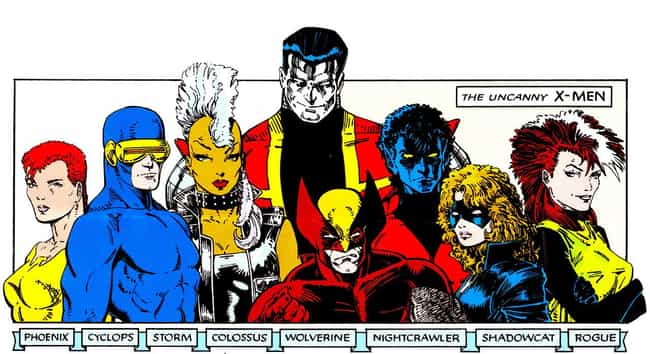
I will argue with anyone that the golden era of the X-Men was the 17 year Claremont run, a glorious era of long term plots, soap opera style relationships, a building sense of anti-Mutant hysteria and a truly international cast of characters.
Leading the team was Storm, yes a black woman was in charge of the biggest selling monthly Marvel produced. What’s more, Storm was such a great, respected and kick ass leader that she held the mantle even through the years she didn’t have any powers. If anything, the no powers, Mohawk Storm was even more formidable and menacing than when she had her weather powers, which you’d have to be to keep Wolverine in line. Plus she still kicked Cyclop’s arse to retain leadership.
There used to be an running gag about superhero team books that there was always one woman in the team. However by mid the 80’s superhero teams had long passed that trope, with the gender balance in the X-Men practically 50/50. For a time Rogue was the strongest and potentially most powerful member of the team.

THE AVENGERS
Back when having an Avengers membership card meant something, it was quite a surprise to me when I bought my first Avengers comic and found that Thor and Iron Man were not in the team. Instead the lineup at this time had Hercules, Black Knight and Starfox who I’d never heard of before (the Beyonder clearly hadn’t as he’d left them out of Secret Wars).

Another surprise was that Captain America was not the team leader, but instead was Janet Van Dyne aka The Wasp. The Wasp being leader provided an interesting story arc for her, having to balance her rich socialite personal life with her professional responsibilities to the Avengers. It also caused conflict in the team, as meathead Hercules resented being told what to do by a woman. Wasp really came into her own during the Under Siege storyline where she was the last Avenger left and had to lead the fight back to take the Mansion back from the Masters Of Evil.
When the Wasp left the team, the mantle was passed once again to a woman, Captain Marvel. The Captain Marvel at this time was Monica Rambeau, yes another woman of colour leading the team. Inspired by the persona of Pam Grier, she had a tough background as a harbour patrol officer and when she got her ability to turn into light became one of the most powerful Avengers. When Baron Zemo’s Masters of Evil coordinated an attack against the Avengers a major part of the plan was how to neutralise her, while in the 1987 X-Men vs Avengers limited series Rogue was uncharacteristicly freaked out by Marvel’s powers.

Rambeau was also a rarity in Superhero comics, especially team books by portraying her with a family life, as her parents became regular supporting characters in the book. Sadly, ever since losing the Captain Marvel name in the mid 90s Rambeau has disappeared down the Marvel ranks, with the less than inspiring names of Photon, Pulsar and Spectrum.
FANTASTIC FOUR

Something that intrigued me when I became a member of Stan’s Marvel army was the fluid, ever changing nature of the comics. Even the rigid make up of the Fantastic Four had undergone a massive change, as The Thing had gone wandering off in his own series and the role of the FF’s heavy had fallen to She Hulk, meaning the team was now equal in men and women.
Sue Storm had undergone a serious change herself. Once arguably the weakest member of the team, her abilities had expanded to utilise energy fields to devastating affect. This potential had been recognised by Dr Doom, who had often claimed she could be the teams most powerful member. To symbolise this, Sue changed her name from Invisible Girl to Invisible Woman.

Incidentally one of the first Fantastic Four issues I actually bought featured the Human Torch slapping around a youth putting up racist placards. This was a tease for a storyline with a regular FF villian the hate monger. His original appearance in the 60’s showed where Marvel stood with regards the Klan.
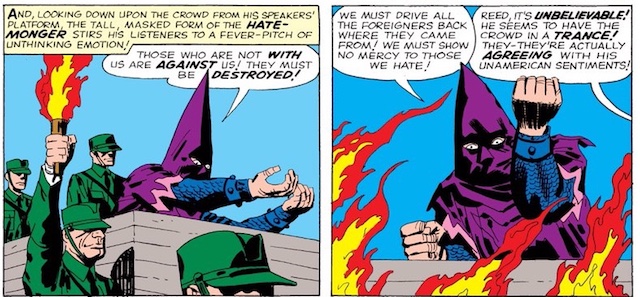
New Mutants

The X-Men’s baby team shared the international flavour of the senior team, with a line up that had the girls far outnumbering the boys. Not only were the team from different nations, there was a rich cross section of ethnic backgrounds.
Team leader was Danielle Moonstar aka Mirage a female Native American, and her team mates included a Vietnamese girl in Karma and a Brazilian male in Sunspot. A strong willed girl, Danielle was initially the only New Mutant allowed to alter her costume to include a belt and braided hair to signify her Cheyenne heritage and she would have issues acclimatising into a wealthy, white household. Native American culture and experience would show up in New Mutants through Dani and in one moment that sticks in the mind while talking on the phone would hear the rest of the team watching a Western and cheering on John Wayne, “Of course we’re the bad guys” she says to her mother.

Alpha Flight

Alpha Flight was one of the more interesting team books of the 80’s, as the Canadian super team they seemed to exist on the fringes of the Marvel Universe, which gave the opportunity for a more mature vibe. For a start they were one of the first comic books I encountered that recognized super heroes probably liked shagging when not saving the world.
Once again Alpha Flight had a woman as team leader when I became a regular reader, with Heather Hudson having just taken over leadership following in the steps of her dead husband. Despite having no powers (she would eventually begin using her dead husband’s Guardian suit) she was able to keep in line the most dysfunctional of Marvel teams, especially with former terrorist Northstar and his little bit weird and creepy possessive relationship with his sister Auroa who herself suffered a multiple personality disorder.

If Alpha Flight appeared today you would hear that cries of “woke” pandering from certain sections of comic fandom. As well as featuring two Candian First Nation members in Shaman and his daughter Talisman, there was a wheelchair user Box and a dwarf Puck. Famously Northstar would come out as gay in 1992, however unlike with Iceman decades later this was no random reveal. Creator John Byrne had intended Northstar be gay from the start of the regular series, but wasn’t allowed to portray him as such (believe it or not one obstacle was the comics code which forbade the portrayal of gay characters). As such writers had to settle for sneaking in hints such as a mystery man in swimming trunks answering his home phone, and some sly teasing from his sister.
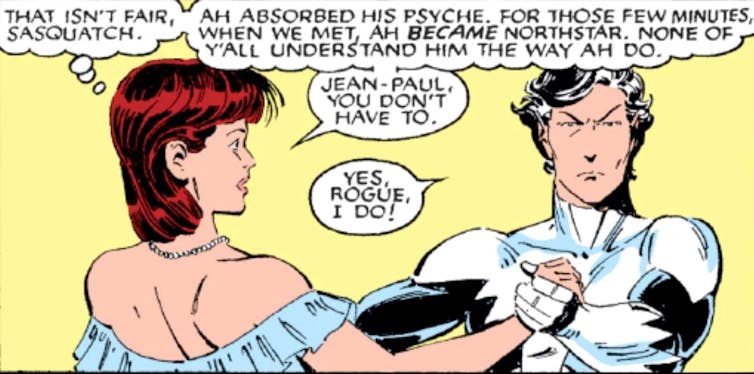
If you really want to work in some subtext you could argue that Walter Langkowski AKA Sasquatch was briefly a Trans or binary character when he was forced to live in the deceased Snowbird’s body and attempted to live as a woman adopting the name Wanda.
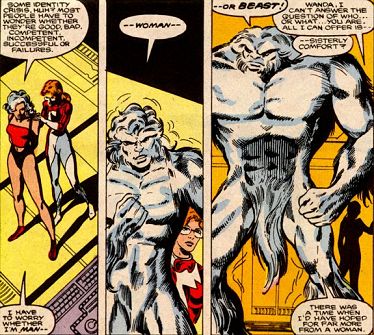
This was the Marvel I read as a kid, and while I can’t speak for the rest of the comic fan community (I knew no one else who read comics until later in life, and of course there was no internet community which in hindsight wasn’t a complete loss), I personally never really questioned in a negative or positive manner the amount of diverse characters who’s adventures I was following each month, or the strong female roles.
It all just felt normal.
Of course, I’m not saying Marvel was a model of progressive attitudes during this time period. The diversity did not extend to the solo titles, as for much of the time while I was reading there were no titles headlined by women (Dazzler was just winding up in 1985 and it wasn’t until 1992 that She Hulk got her own groundbreaking, fourth wall breaking series), or black characters. Jim Rhodes did take over as Iron Man for a few years when Tony Stark fell back into alcoholism and was an affective new direction for the book, as opposed to Marvel’s recent “everyone’s changing race and gender” to it’s top line acts.
POC characters such as Luke Cage, Black Panther and Master of Kung Fu were absent from solo and team books and were lost somewhere in the Marvel wilderness.I remember getting a big thrill when Black Panther appeared briefly in a Captain America issue just to drop off a new shield with Steve Rogers (and incidentally I was really disappointed in Infinity War that the shield Rogers was giving in Wakanda wasn’t that one).
There was zero representation of gay characters, even in the X-Men which being so deeply rooted in the themes of prejudice, outsiders, alternative communities and being forced to hide who you were would have been the perfect comic to feature them. It’s a little victory that Claremont was able to sneak in a reference to the X-Men finding that San Francisco was more welcoming and accepting of Mutants than in other places. (Claremont you bloody legend).
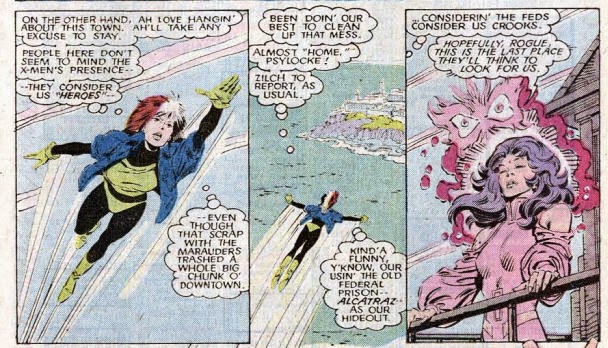
No, Marvel in the 80’s had a long way to go with representation, but as the teams I’ve highlighted show, it wasn’t the all white male show that some today would assume it would have been.
So What Point Am I Making?
Is there a point to make here? I have to find one I guess.
Maybe this? The team books that I read as a child normalised for me reading about strong, powerful women and characters from other races, something that looking back may well have spread into my film, TV, books and music consumption. This opened up my mind and my tastes to more varied comics, and I don’t think it is a coincidence that some of my favourite comics of this century were Harley Quinn, Gwenpool, Ms Marvel. I didn’t gravitate to these titles because I wanted to be “woke”, they were just the most emotionally engaging and interesting. Ms Marvel, with it’s central character of balancing her secret superhero identity with her homelife, Muslim upbringing and the added layer of growing up in America is a throwback to the experiences that gripped readers following Peter Parker growing up. As for Harley Quinn, as well as being the story of a independent woman striking out and making a life on her terms, it also features in my mind the most moving romance in comics, that being with Poison Ivy.

What these comics shared with my team books of the 80’s is these traits felt natural, I didn’t feel a heavy handed agenda was at work with them. These were characters in their own right, with a unique story to tell. They were exciting, funny, emotional and had a nuance to them with socially relevant themes that put them above being just about people in capes throwing cars at each other. In short, everything I was trying to convince comics were back when I was in my teens.
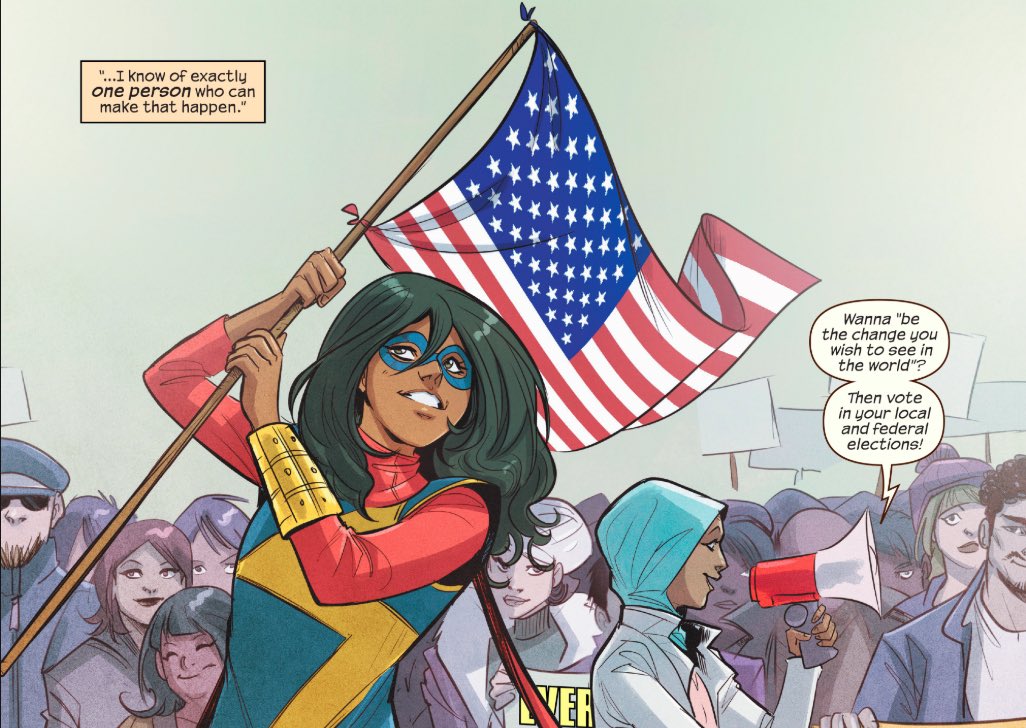
My final thought, is that right now is the many positive effects of diversity in popular culture is being lost in grand standing and one-upmanship. The weak willed and narrow minded are aggressively over reacting at every small step of progressivism. Imagine if today four of the top selling team books had women in charge, three of them women of colour like when I was reading them in the 80’s, there would be tears and paddying at “forced diversity” all over youtube. And then there is the “taking the win,” attitude from the other side. When a female Dr Who was announced I saw more bragging tweets of how “this will piss off the CIS white nerds,” than I did people praising the good news or even those males upset by the news. A similar reaction greeted rumours of a black female 007.
And don’t even get me started on the cynical commercialism that is hijacking the cause of representation. You can practically feel board rooms full of meetings starting with “you know, this diversity trend is gaining traction and has a growing potential upside. which of our properties can we repackage with women and POC to take advantage of this?” Throwing titles out there under Umbrellas of “female-centric” and “diversity-friendly” is going to come across as clumsy and pandering.
Surely, there are plenty of comic shelf spaces to provide for the needs of all who want to be involved in comic fandom? Surely there is a way to creatively bring nuance and balance to comics, that encourages an open mind and inclusivity? And is it too much to ask to just be happy with the comics that you like and not go aggressively after those that don’t appeal to you?
Isn’t there enough bad shit today happening today, without bringing more on something that’s meant to be enjoyable?
If you have any thoughts, find me on twitter @dazzalovesmovie
Dazza




